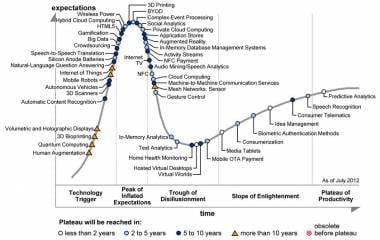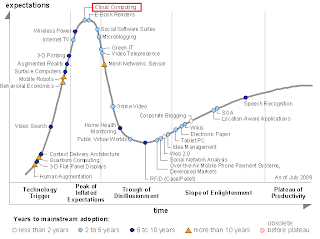
The challenge partially has to do with historical evolutions. We need to take this into account when we look at data and research on the IoT. The term ‘Internet of Things’ is used for a gazillion of devices and applications that serve different purposes, use different technologies and really are too diverse to be able to even speak about ‘an Internet of Things’. The list of examples goes on but the picture is clear. in the context of IoT applicatings in farming? IoT sensors offering environmental data in a context of oil wells and other devices in industrial environments such as oil and gas (IIoT)? Devices for capacity sensing? An IoT-enabled fan in your home? Your IoT- ready TV? The challenge of the IoT umbrella term Is a smart watch that can keep track of your physical efforts and transmit the data to a fitness/health app online a connected IoT-enabled device? And if so, do we include it in our IoT universe data and forecasts? What about the tags with microphones, motion sensors etc. What is a device? And what is a connected device? What do we, for instance, mean if we say that the Internet of Things industry will have an estimated value of xyz Trillion Dollar market value by the year abc? And where are those auyonomous vehicles? They won’t be driving around before at least another 7-10 years, if ever. Many technologies, many types of applications, many types of devices and many underlying enablers.Īnd guess what? When you stumble upon data or forecasts regarding the “Internet of Things”, as if it were a thing, it is rarely said what exactly is part of it and what not. This is where part of the hype and battle of the numbers begin. Hype Cycle for Emerging Technologies 2016 – Source: Gartner, August 2016 Yet, it’s in the integration of all those technologies, IoT and blockchain, IoT and AI, IoT and drones and any combination of several ones whatsoever, that the real power sits. And so are fog computing and edge computing, new sensor technologies and are all those consumer technologies and “smart anything” enablers. Autonomous vehicles have past the peak of inflated expectations and move towards the through of disillusionment. The connected home is reaching the peak of inflated expectations and IoT Platform technologies (along with blockchain and other technologies believed to enable the so-called platform revolution) still rank lower. If we look at Gartner’s Hype Cycle for Emerging Technologies 2016, we see that several technologies, which traditionally are seen as part of the Internet of Things are still in the Innovation Trigger stage. Hype cycles and the definition of the Internet of Things universe

And neither is the confusion that is created if you are interested in the Internet of Things and find yourself overwhelmed by thousands of reports, and opinions, which on top often focus on messages and data that aren’t really making it clearer what the Internet of Things in practice can be for your organization or life. While IoT technologies and the different ways the IoT is leveraged have certainly changed enormously in recent years and while the future opportunities and growth of the Internet of Things do look good, this ‘rush’ mentality isn’t necessarily what we need. However, at the same time there is this sense of urgency which is created by many vendors in order to accelerate the transitions to the Internet of Things in several industries. Other research firms and consultancies have been reaching similar conclusions. Why is it important to look beyond the Internet of Things hype aspects? First of all, smart organizations know what the Internet of Things can do for them and their customers as they move beyond pilot projects towards more scalable IoT deployments. The difference between perceptions of urgency and the acceleration of IoT deployments

Just look around: you won’t find a single universal definition of the Internet of Things.Īs the IoT is now really omni-present in mainstream media and the marketing messages of big technology firms across the globe, it’s time to look beyond any Internet of Things hype and focus on what matters. The matter of the fact is that no one even agrees on what the Internet of Things really means. Were you confused? Don’t worry, you are not alone. If you ever looked at research regarding the state of the Internet of Things (IoT) or predictions about the growth of the number of IoT devices, applications and IoT-generated data, you probably noticed huge discrepancies in the numbers and forecasts.


 0 kommentar(er)
0 kommentar(er)
